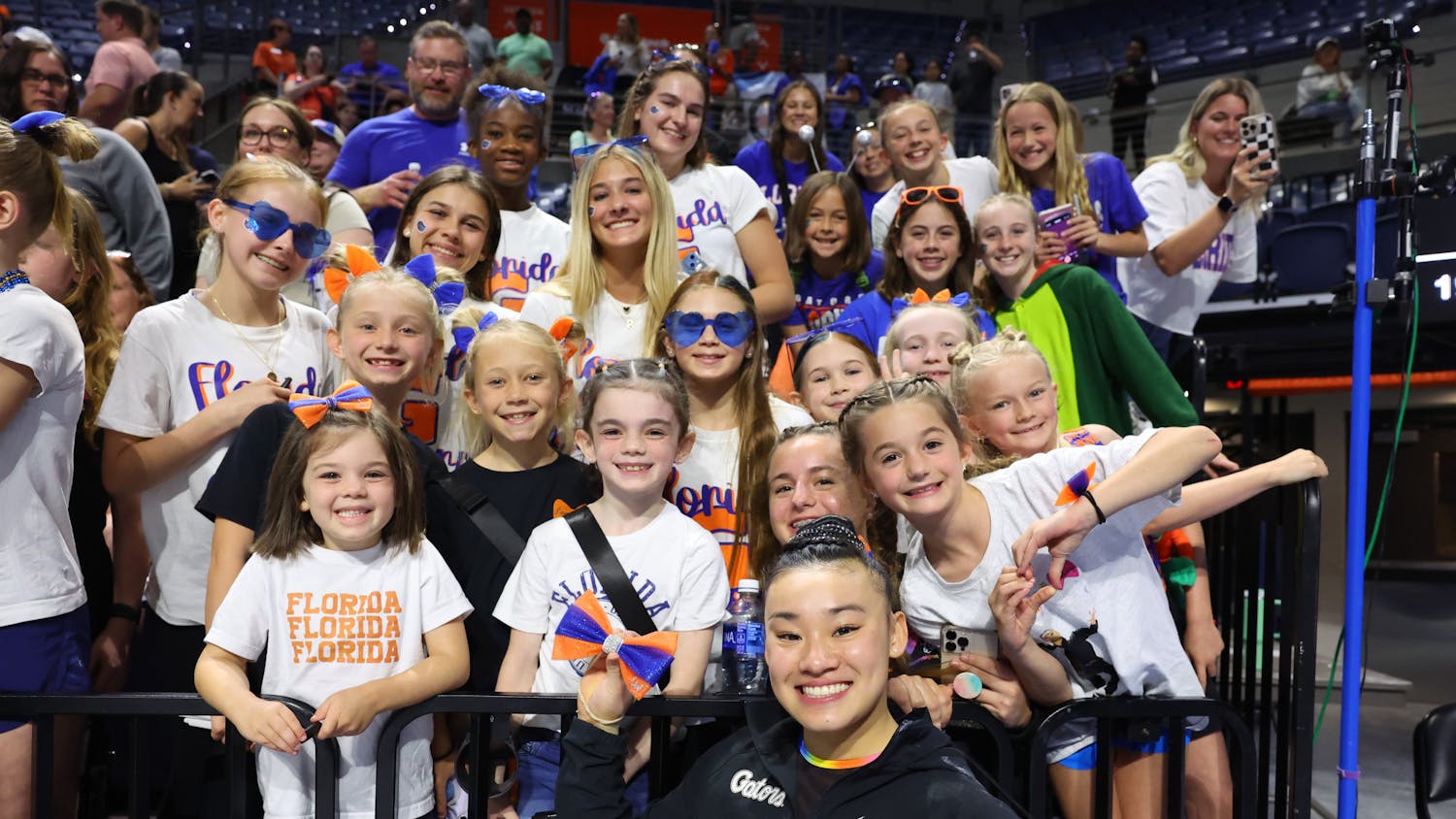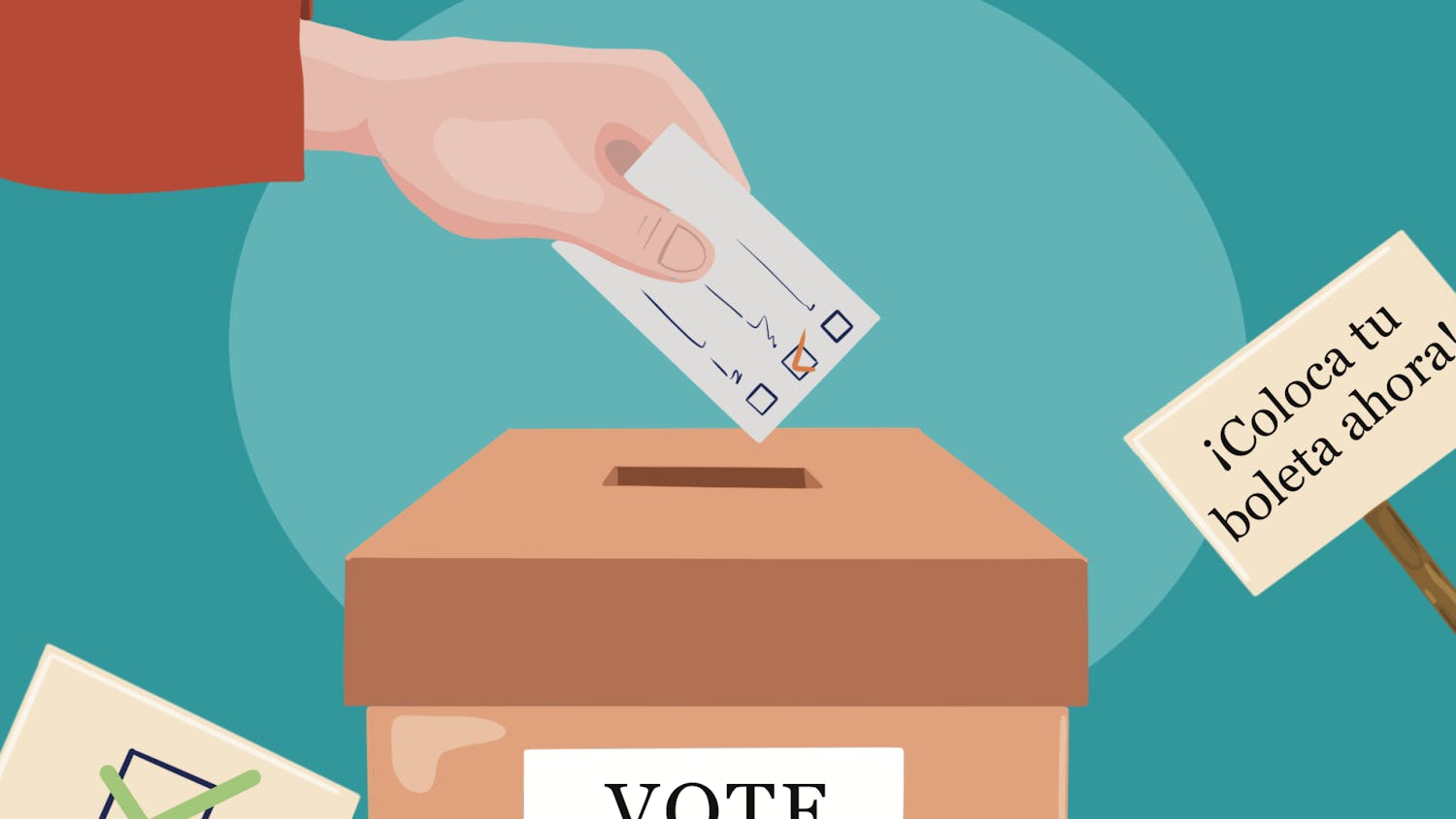Several articles have been written lately regarding whether enrollment of African-American/black students at UF has drastically decreased.
After the Alligator received a letter from the Florida Board of Governors that objected to the findings of the articles due to several mitigating factors, we decided to investigate the matter.
After more than a month of crunching data and speaking with students and faculty about race, ethnicity, socio-economic status and what each person’s individual experience brings to the UF community, we’ve developed a report of the recent trends for African-American/black and Hispanic/Latino enrollment at the university.
Enrollment numbers at UF have fluctuated for all backgrounds, but the most noteworthy were the decrease in black/African-American student enrollment and an increase in Hispanic/Latino students.
| Jump to section: | Black at UF | Hispanic/Latino at UF | The Data |
Drawing conclusions from an increase or decrease of student enrollment can be difficult because numbers don’t tell the whole story.
- From 1997 through 2009, the options for self-reporting race included only singular distinctions, like white or black/African-American. In 2010, the option to self-report having two or more racial backgrounds was added, and this is how UF still records data today.
- UF throws the distinction of Hispanic/Latino into the category of backgrounds even though it is an ethnicity and the rest of the options are race. Race is a biological and genetic distinction, and ethnicity is the culture a person comes from.
- While the percentages in racial breakdowns of students has fluctuated within the last ten years, the number of students enrolled on UF’s physical campus has hovered around 45,000 to 46,000 because UF faced size limitations, wrote UF spokesman Steve Orlando in an email. These size limitations made the available acceptance to UF’s physical campus harder to obtain — the number of applicants has steadily increased while the number of spots has remained the same. The competition to get into UF has increased, giving students with the best scores the best opportunity to be accepted.
- The socioeconomic status of a student is a direct player in how well a student scores on exams and in school. Students from a lower socio-economic background have less access to high-quality curriculums, starting in the K-12 system, said Dorene Ross, a professor emeritus from the UF College of Education. In addition to lack of rigorous curriculum, many of these students do not have parents who know how to navigate the school system. “One of the things that encourages children who have to overcome obstacles to their academic potential is having an adult who is a cheerleader saying, ‘You can do it! You can do it!’” she said.
- As these children progress through the school system and approach college, money becomes the direct barrier to access. “Many of these students were working to provide for their families so to them, their education is taking away from their families’ resources,” she said.
- The three years worth of data after the reporting changes is not enough to indicate a longterm trend.
Black at UF:smaller in number, bigger in community support
Black students are not accepted into UF based on affirmative action.
After former Gov. Jeb Bush eradicated the legislation in 1999, black student enrollment at UF steadily rose until 2009. In 2010, UF added the option of “two or more” for students to self-report background. After this change, the percent of black students enrolled began to decrease in 2010 until African-Americans went from about 9 percent of the Student Body to about 7 percent of the Student Body in 2013.
Even if the new “two or more” category was completely made up of previously identified black students, there was still a decrease in the black enrollment numbers.
“Nationally, black enrollment across the university spectrum is down,” said UF spokeswoman Janine Sikes.
She said the administration believes the specific-to-Florida reasons that black enrollment is down center around the lack of financial aid.
Black Student Union President Shrisa Reid-Renaud said students gravitate toward colleges that give more scholarships, which tend to be historically black universities. A lack of money also impacts programs that expose underprivileged kids to higher education.
“Not knowing that UF is even a possibility prevents students from applying,” the 22-year-old telecommunication senior said.
Amount of African-American and black students who applied to UF:
2,862
Amount of African-American and black students who were
accepted into UF:
862
Data is from 2013 for undergraduate students
This is a problem that cycles through communities with a lot of first-generation college students.
They have little guidance with higher education, wrote Vee Smith, the director of the Institute of Black Culture, in an email. “College still feels unattainable to our community.”
Goeto Dantes, a 22-year-old applied physiology and kinesiology senior, has worked to support himself through college. As a pre-med student, he worked 40 hours a week as a nurse at UF Health Shands Hospital while applying to medical school.
“I had to work for every single thing I got,” he said, “and my GPA stands the test of time not only by me working academically but physically as well.”
Dantes will be attending the UF College of Medicine in the Fall. Some people may joke that he and other black students are only accepted in universities because of affirmative action. It starts off as a joke, but ends up being a subtle form of racism.
“It diminishes the merits that you work so hard for,” he said.
Racism at the university hasn’t always been so covert. In the past few years, fraternity brothers have worn blackface to parties and shouted racial slurs at women. At a university with a long history of a white majority, racist stories are not rare.
But in the organizations that spring up for minority student populations, the community is strong and growing. Reid-Renaud said having something like BSU at such a large university helped her become more comfortable by meeting students who are also experiencing the new environment of UF.
“I have been able to reach out to other black students and help them have a good college experience as well through our community,” she said.
On top of that, the Multicultural and Diversity Affairs office creates safe spaces and provides resources for students on campus.
“At the Institute of Black Culture (IBC), we try to be integral in the lives of the Black (and) African-American community from the time they are accepted to the university up to the point that they leave,” Smith said.
These resources are well-used and help foster growth in the community within UF and would benefit from additional funding and staff. More resources could help recruit and retain students by allocating them to fill black students’ needs at UF.
“The goal is to create life changing, joyous experiences to our Gators,” Smith said, “so they go back to their homes and communities and encourage others to apply.”
Hispanic/Latino at UF: increased population, growth in representation
Joselin Padron-Rasines went from a mostly Hispanic high school to a mostly white university. Next year, she will be UF’s first Latina Student Body president.
The results of the election reflect a larger trend in student population: The number of Hispanic and Latino students is on the rise.
Between 1997 and 2009, the number of Hispanic and Latino students attending UF as undergraduates jumped from 10 percent of the total undergraduate population to 16 percent. Race identification options on applications changed in 2010. Still, from that year to 2013, Hispanic and Latino student population increased from 16 percent of the Student Body to 19 percent.
The rising numbers of Hispanic and Latino people living in the state could contribute a lot to the rise in UF’s population, said Janine Sikes, UF spokeswoman.
“I think that the face, with the new president of UF and with a new Student Body president, is shifting at UF, and that’s really exciting,” said Olivia Garcia, director of the Institute of Hispanic-Latino Cultures.
The number of Hispanic and Latino students would also have been affected by a change in the way race is reported on applications. In 2010, “two or more races” was added as an option for students to choose. Although students have the option to select both “Hispanic and Latino” and then a race, the system will only record them as “Hispanic and Latino,” according to a letter from the Florida Board of Governors.
This is problematic, said Garcia, because Hispanic and Latino are both ethnicities, not races.
“I don’t know if all of our Hispanic students know to choose Hispanic — they might be choosing white,” she said. “It might be that some of our Afro-Latino students, because they racialized as black, are choosing African-American or black.”
Amount of Hispanic and Latino students who applied to UF:
6,160
Amount of Hispanic and Latino students who were accepted into UF:
2,441
Data is from 2013 for undergraduate students
While UF is embracing its future Latina Student Body president, the university has not always had such open arms.
When Gil Sanchez ran for Student Body president in 2001, someone spray-painted “No spicks for president!” on La Casita, the home of the Institute of Hispanic-Latino Cultures, according to Alligator archives.
“I’m not going to say that that wasn’t a worry, to see how campus would react,” said Padron-Rasines. “But it’s positive when you can see that it is possible for someone who is a minority to win Student Body president.”
Racism is unfortunately something Hispanic and Latino people still experience today.
When Valeria Hernandez was in third or fourth grade, a classmate boasted about what a nice person she was by letting Hernandez sit next to her, since Hernandez was naturally tanned. This, along with other incidents of bullying over her Hispanic ethnicity, sent Hernandez on a path to erase her Venezuelan roots.
Hernandez, a 19-year-old UF psychology freshman, stopped speaking Spanish in public and began working on transforming her Venezuelan accent into one from the mid-Atlantic.
Since coming to UF, however, Hernandez has chosen to embrace her heritage. Hernandez said her involvement in the Hispanic Student Association gave her a positive campus experience.
“When I was kind of like alone, they reached out,” she said. “I feel like my college experience wouldn’t be as enhanced, or I wouldn’t have as much opportunities without HSA. They’re like my family. I love them so much.”
Padron-Rasines also attributed her experiences to her involvement in multicultural groups. She felt welcome at HSA and La Casita.
While they are great resources for students, Padron-Rasines said, UF could make campus even more open to Hispanic students by increasing the scope of those organizations.
“I feel like sometimes those are really overwhelmed resources,” she said. “There’s not enough outreach and a lot of these departments are really small.”
“When we have a diversified student body population — it amplifies the learning experience and the academic excellence of the university. As students, we all benefit from being surrounded by people with different races, ethnicities, religions, political stances and beliefs that we can learn from.”
[A version of this story ran on page 8 -9 on 3/18/2015]




